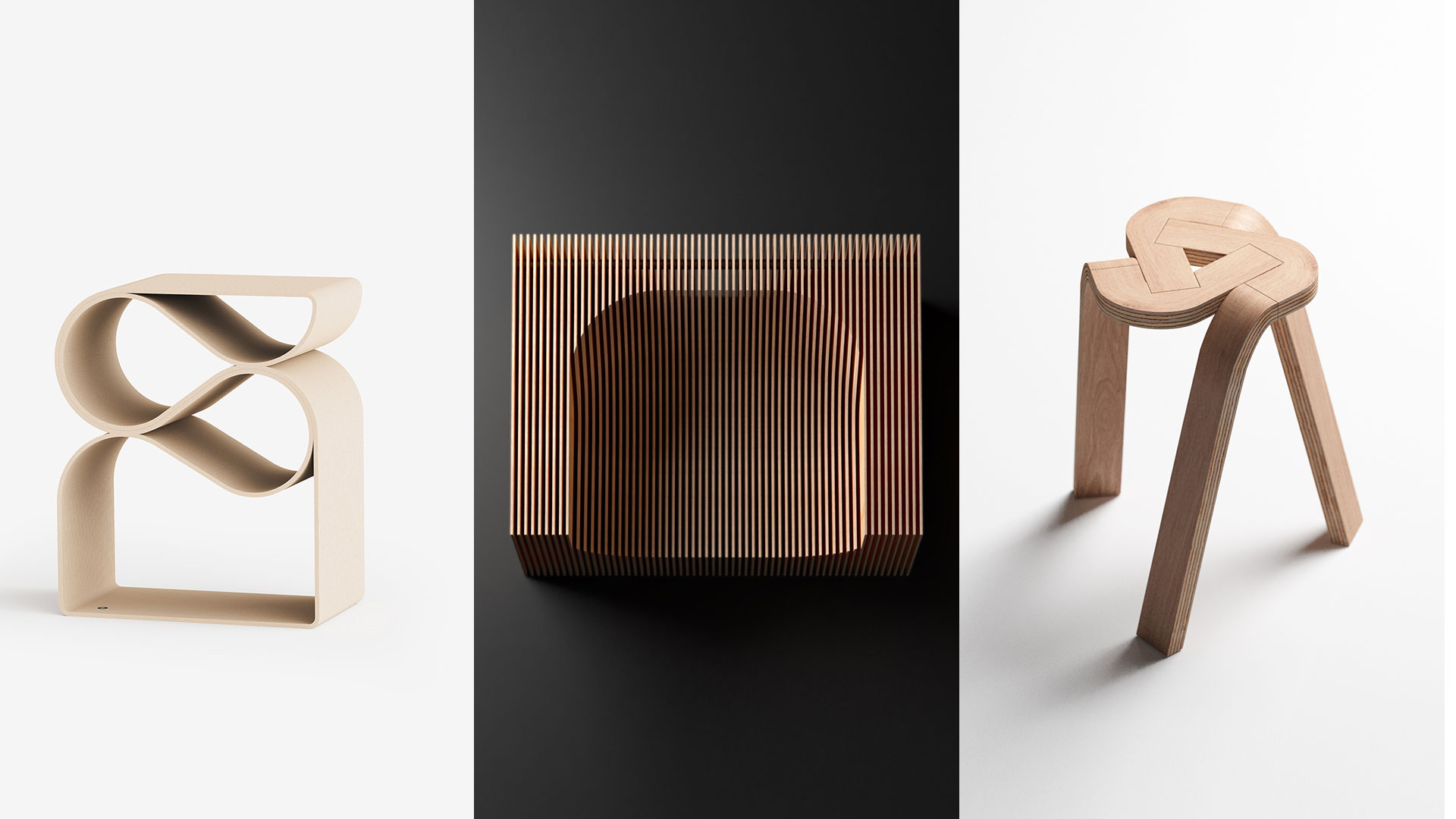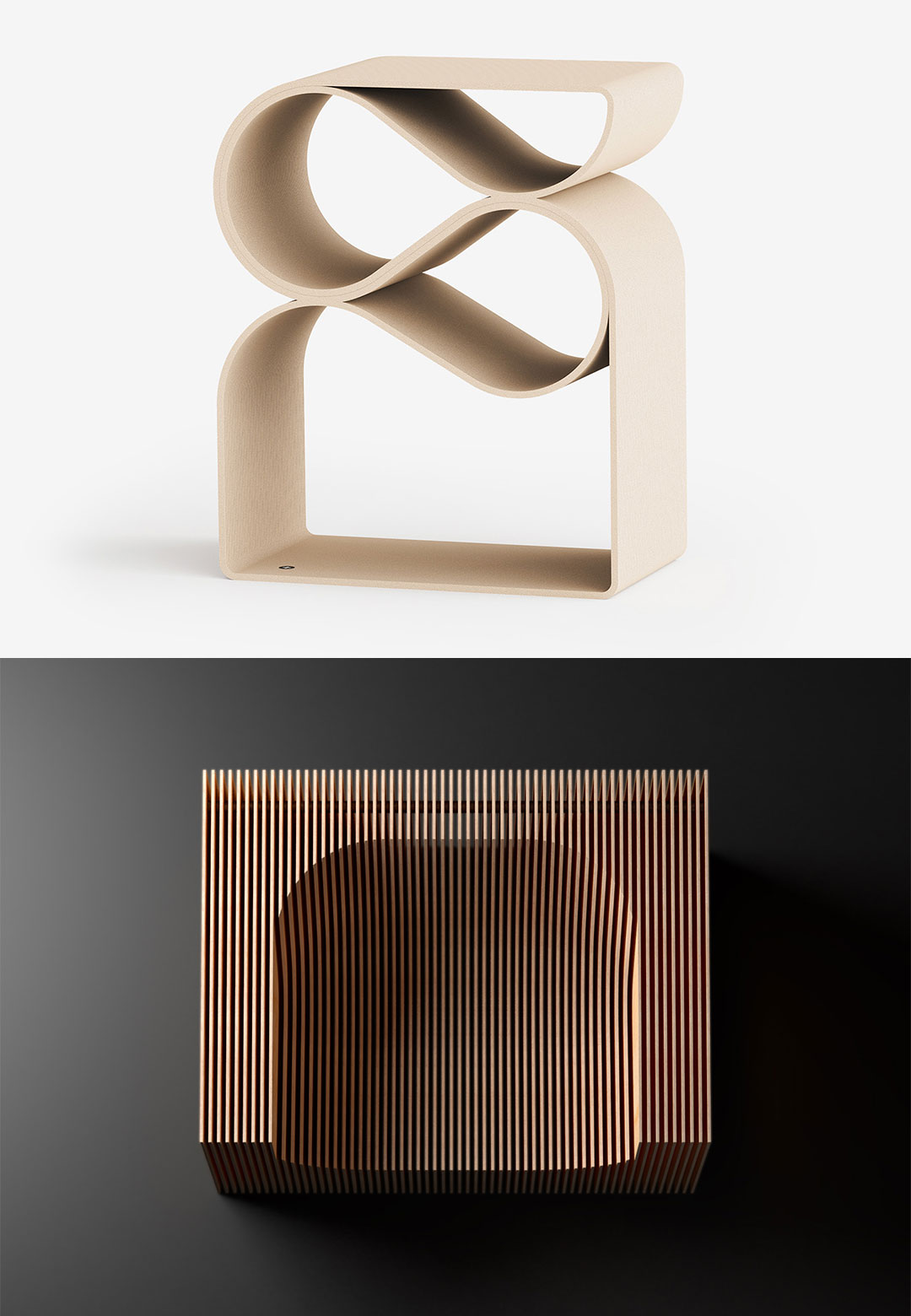Furniture design is an art that requires a keen eye for detail, functionality, and aesthetics. German furniture designer Deniz Aktay embodies the spirit of this art, crafting idiosyncratic pieces at the crossroads of abstract yet functional, exploring a diverse range of material palettes—ranging from wood and metal to glass and plastic. With a background in architecture and urban planning from the University of Stuttgart, Germany and perennial work experience as an architect, Aktay grasped aspects of creating, forming, and designing which manifest in his futuristic design juxtaposes simplicity, originality, proper element joining and appropriate material usage, bringing to fruition innovative designs that meet user needs alongside enhancing the beauty of the space they occupy.
In a conversation with STIR, Deniz Aktay discusses his journey as a designer from renders to physical products, with a vision of creating extraordinary furniture designs to the importance of materiality and functionality, he talks about his projects as a manifestation of his beliefs as a designer.
STIR: Take us through your journey as a designer and eventually building Dezin Objects.
Deniz Aktay: During my studies of architecture and urban planning at the University of Stuttgart and for my perennial work experience as an architect, the aspects of creating, forming and designing always have been important in my creative work. Following this passion also in my free time, I could successfully participate in several furniture design contests. Additionally, the more I focused on designing furniture and objects, the more my enthusiasm grew. Over time I figured out that good design means finding the right harmony between proportion, material and functionality. This goes with my demand for simplicity, originality, proper element joining, detailing and appropriate use of the materials involved. Considering all these aspects, designing a new piece is an interesting challenge every time. While getting increasingly visible on social media, I could attract attention from various interesting manufacturers.
STIR: Tell us about some people and design styles that inspire your work. How would you describe your designs and style?
Deniz Aktay: I wanted to create uncommon furniture pieces. There are great designs on the market and I know furniture has to be simple and clean to get sold these days. But most of the current designs are also a bit boring so I thought why not approach furniture design more playfully and not necessarily with the aim to produce them? So most of the designs I create I know they are maybe impossible or inefficient to produce or sell for the mass market but I always liked to create something extraordinary. I started with furniture design thinking out of the box, nowadays I have the feeling that most manufacturers don’t have the heart anymore to do extraordinary designs which is understandable because this is very risky so you don’t know if people will buy them. So for me, you see lots of good designs, clean, simple, and minimal, but only a few which are extraordinary. So I don’t want to say that all designs are boring and mine are better, I just wanted to design something different and of course, I can do that easily because I am free to do whatever I want without risk in the visualizations. The second thing is what I experienced a lot during my work as an architect: if a manufacturer says that a design is impossible to do, that does not always mean it is impossible to do but means that it needs lots of work to get done. It has to be exciting. This could evolve from a nice and extraordinary detail, from a shape itself, from a big functionality but sometimes also from a surprising use of colours, confirming that they will be stable. My designs are very inspired by the Bauhaus philosophy and minimalism, but I also find inspiration in other related arts like music, painting, sculpting and fine arts. Mostly I get inspired by other artists in the same field. Searching for good design pieces via Instagram or Pinterest is the main source of inspiration. Just looking at other designs you get both conscious and unconscious influences by other designs and arts.
STIR: What are your preferred materials to work with, and why?
Deniz Aktay: I like working with pure materials like wood and metal. I like the long history of working with wood as a material. People have been shaping items with wood for thousands of years and it is still fascinating and you still create something new. I also love its natural characteristics. On the other hand, metal is a great material to do crazy and stable shapes. You have much more freedom in designing using metal so it’s a material I use very often.
STIR: The ‘Drop’ side table has a minimalistic yet sculptural design, how did you ideate its form?
Deniz Aktay: The Drop side table derives from elaborations and knowledge about old architectural techniques. Its shape is built from multiple slopes that support each other like arches or domes from ancient churches and buildings. This structure allows the design to be stable but generate multiple storage areas at once. The special 3d-printing technique works best if the design is made of one continuous line which was the challenge here but was perfectly mastered by making a self-supporting structure with an “end-to-end” footprint.
STIR: The ‘Falcon’ chair and ‘Multangular’ side table look like origami come to life, what material did you opt for to achieve its form?
Deniz Aktay: While experimenting with folded polygonal shapes, I developed both designs which could fit in futuristic interiors. I guess bent metal sheets work best here. It’s the most suitable material for these challenging shapes, especially if you want this thin material thickness which is a big part of the design aesthetics here.
STIR: The ‘Layers’ armchair appears like an illusion of lines, what was the concept behind the design?
Deniz Aktay: I love the idea of creating shapes by using subtractive methods. In this chair-design, the seat is cut out from multiple plywood sheets to create a firm but light-looking armchair at once. I tried to lighten the heaviness of ordinary seats and sofas. This way the design becomes an enrichment for every interior because it is volumetric and confident but also light and unimposing.
STIR: The ‘Tie’ stool comprises just 3 plywood pieces intertwined together, what was its process from prototyping to fruition?
Deniz Aktay: The tie stool is a wooden furniture whose beauty lies in its sheer simplicity – not just its design but also its materials. The stool design comprises three bent plywood strips that conveniently lock into each other, creating a tripod form that you can easily sit on. The design can conveniently expand to accommodate more strips to create a 4-legged (or even 5-legged) stool, but the dynamic nature of having a tripod format gives the tie stool its appeal. Fabricating the tie stool would require a few simple steps -- the three plywood strips can be split into 6 total parts (you can see the parting lines) and the individual parts are formed using high pressure and temperatures that cause the plywood to bend and retain its shape, then cutting/finishing processes are performed on the parts to make them interlock into one another. The entire stool can potentially be flat-packed and shipped to customers, who would simply have to plug the pieces together to get a stool that is as beautiful as it is simple and stackable too.
STIR: How has the journey from publishing rendered designs to crafting the physical pieces been?
Deniz Aktay: It is a tough journey. Realizing your concepts is a big challenge. You need to find the right manufacturer. You need to attract companies willing to build your designs. This can be very complex as bringing new furniture onto the market is a high risk, but with my architectural education, I have some knowledge about materials and technical details which is helpful to convince my partners of the feasibility of my designs.
STIR: What trends do you see emerging in the furniture design industry in the next few years?
Deniz Aktay: I think the furniture industry is still focusing on sustainability in design. Considering the impacts of the climate crisis developing long-lasting and material-effective furniture is more important than ever. Besides this, I see more and more designs are influenced by the bright colours and organic shapes of the 70s these days. I think we can expect a revival of some “space-age” furniture in the next years.
STIR: What is NEXT in store for you?
Deniz Aktay: I am working on some very exciting projects in collaboration with interesting companies that are rich in their traditional values. I hope to release some information soon but we are currently still in the developing phase. Stay tuned!
Text by Ria Jha






 Sign in with email
Sign in with email










What do you think?